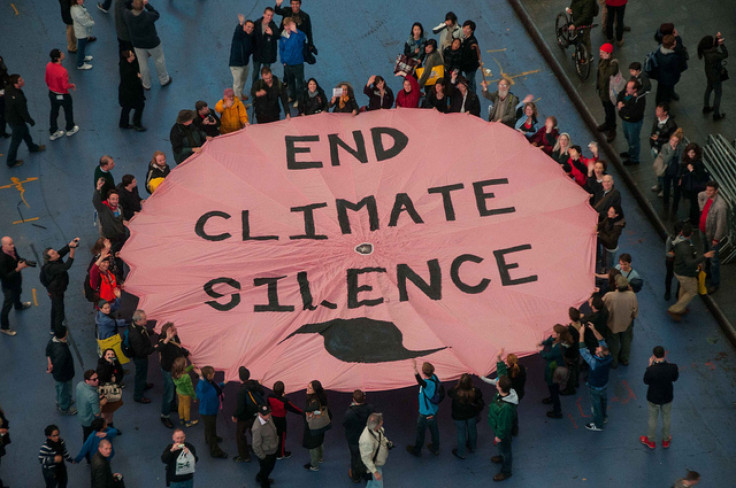Hurricane Sandy: Is it Evidence of Global Warming?

As the biggest tropical storm ever recorded in the Atlantic barrels along increasing stretches of the East Coast, some people can’t help but wonder: Is the “Frankenstorm” simply a bizarre but perfectly natural occurrence? Or is the extreme storm evidence of a shifting global climate?
At this point, the answer is unclear. While climate scientists are currently split as to whether extreme weather is indicative of a changing global climate, there is a consensus that some factors that may have created the storm – such as warmer seas -- make sense in a climate change narrative.
According to Kevin E. Trenberth of the National Center for Atmospheric Research, the question isn’t whether extreme weather is caused by climate change. Because, in fact, “all weather events are affected by climate change because the environment in which they occur is warmer and moister than it used to be.”
Several studies indicate that ocean temperatures have risen sharply within the last century. In April, the Scripps Institution of Oceanography at the University of California San Diego, reported temperatures in the upper portions of the ocean have increased by an average of .59-degree Fahrenheit since the 1870s. At the ocean's surface, the researchers noted a 1.1-degree Fahrenheit increase.
"The significance of the study is not only that we see a temperature difference that indicates warming on a global scale, but that the magnitude of the temperature change since the 1870s is twice that observed over the past 50 years," said Dean Roemmich, a UC San Diego physical oceanographer who led the research, in a statement.
And warmer sea temperatures contribute to rising sea levels, Roemmich said. The National Oceanic and Atmospheric Administration reports about 4,514 miles of the nation’s shoreline – about 20 percent of the country’s total coastline – is highly vulnerable to sea level rise, something that will only become more of a threat as water temperatures continue to rise. Higher sea levels also lead to stronger storm surges and ultimately, more damage to coastal regions.
As The Telegraph’s Tom Chivers points out, in theory, “warmer seas mean more energy in the cyclone systems that form tropical storms, which, it is hypothesized, means higher wind speeds; warmer air can carry more moisture, meaning, theoretically, more rainfall.” However, one 2005 analysis of peer-reviewed literature by the American Meteorological Society discovered there was “weak” evidence to suggest there has been an increase in hurricane intensity over the last 50 years.
Still, some environmental advocacy groups suggest Hurricane Sandy is only one of several extreme weather events the globe has seen in 2012 and have used the storm as an opportunity to bring attention to climate change. On Sunday, the activist organization 350.org organized a rally in New York City’s Time Square called “Connect the Dots between Extreme Weather and Climate Change,” where participants held a huge banner emblazoned with the phrase “End Climate Silence” in a nod to the scarce attention the issue has received during this year’s presidential election season.
“It’s really important that everybody, even those who aren’t in the kind of path of this storm, reflect about what it means that in the warmest year in U.S. history, ... in a year when we saw, essentially, summer sea ice in the Arctic just vanish before our eyes, what it means that we’re now seeing storms of this unprecedented magnitude," 350.org founder Bill McKibben told Democracy Now!. "If there was ever a wake-up call, this is it."
© Copyright IBTimes 2024. All rights reserved.











